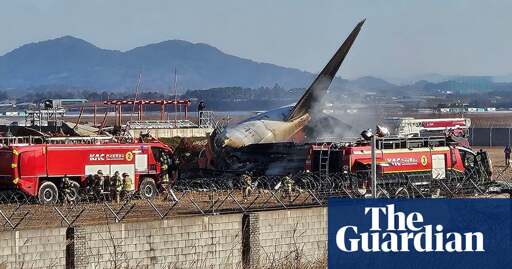Summary
A Jeju Air plane crash at Muan International Airport in South Korea has killed 179 of the 181 people onboard, making it the nation’s worst domestic aviation disaster.
Two crew members survived with severe injuries, while two people remain missing.
Authorities suspect a bird strike and adverse weather contributed to the crash, as the plane skidded off the runway and burst into flames. Black box data is being analyzed to determine the exact cause.
The crash has drawn global condolences and marks the first fatal accident for Jeju Air since its founding in 2005.



I don’t know what happened here, but man does that official speculation make no sense at all. At least I can’t think of any realistic scenario in which a bird strike causes that.
Large planes like that use thrust reversers to stop.
A bird striking the engine will kill that engine.
A dead engine means the plane is harder to control at low airspeed and will start to turn towards the damaged engine.
Once they’re on the ground, pilots will use the thrust reversers to redirect the engine thrust forward and slow the plane down, but thrust reversing with a damaged engine will cause the plane to turn very sharply.
And remember, this can all occur in seconds. It’s easy to judge when you’re sitting in your home, but think about the last time you had a near accident while driving. How close were you to disaster? Are you sure you’d be able to make the right call if a deer jumped in front of your car?
I’m a 737 pilot. Reverse thrust is never calculated into landing distance. You use brakes and spoilers, reversers are a bonus. Airplanes are perfectly capable of landing with no thrust, in fact normally in an engine failure you don’t use the working reverser because of the potential of a loss of control from asymmetric reverse thrust.
Assuming worst case scenario, they lost hydraulic systems A and B due to an uncontained engine failure. In that case the landing gear can be lowered with a gravity release and the flaps can be lowered with an electric alternate motor. The right engine clearly is still working on touchdown, you can see the cowl shroud open as the reversers deploy in the video. The problem is that they touched down just short of the end of the runway, probably around 180 knots, with a totally clean plane. I don’t know how they got into that position, but it wasn’t only a bird strike.